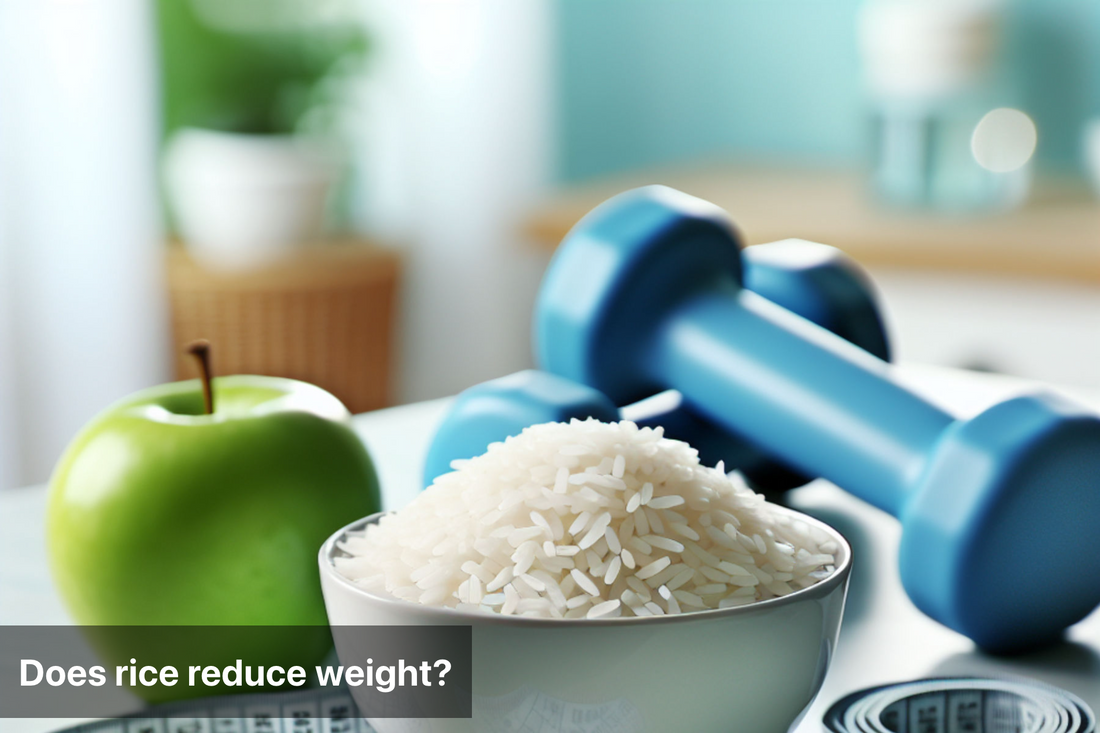
Does rice reduce weight?
Share
Understanding the relationship between diet and weight management is crucial for anyone trying to lose weight. Our food choices directly impact our overall health and body composition. A balanced diet helps maintain a healthy weight and promotes lasting well-being. One staple food that often comes into question is rice. Many wonder, "Is rice good for weight loss?"
Rice, particularly varieties like brown rice, can fit into a weight loss strategy when consumed mindfully. It is low in fat and offers a good source of energy. Unlike many processed foods, rice can be part of a balanced meal when paired with vegetables and lean proteins. The right portions matter. Eating rice in moderation can provide necessary nutrients while keeping caloric intake in check.
There’s also growing interest in alternatives like ragi, which some studies suggest may be beneficial for those looking to shed pounds. The appeal of ragi for weight loss derives from its high fiber content, which promotes satiety.
Ultimately, the question isn't simply whether rice or ragi helps with weight loss. It's about how these foods can be incorporated into a diverse and balanced diet that includes various food groups. Making informed dietary choices can lead to effective weight management.
Types of Rice and Their Nutritional Profiles
When considering different types of rice, it’s crucial to understand their nutritional profiles, especially if you’re aiming for weight loss.
Type of Rice |
Calories (per 100g, cooked) |
Carbohydrates (g) |
Protein (g) |
Fat (g) |
Fiber (g) |
Key Nutrients |
|---|---|---|---|---|---|---|
White Rice |
130 |
28 |
2.7 |
0.3 |
0.4 |
B vitamins (low amounts) |
Brown Rice |
111 |
23 |
2.6 |
0.9 |
1.8 |
Magnesium, selenium, fiber |
Basmati Rice |
121 |
25.2 |
3.5 |
0.5 |
0.4 |
B vitamins, magnesium |
Jasmine Rice |
129 |
27 |
2.9 |
0.3 |
0.5 |
Low in essential nutrients |
Black Rice |
145 |
31.7 |
3.5 |
0.5 |
2.8 |
Antioxidants (anthocyanins), iron |
Red Rice |
112 |
23.5 |
2.5 |
0.8 |
1.8 |
Antioxidants, magnesium, zinc |
Wild Rice |
101 |
21 |
4 |
0.3 |
1.8 |
Zinc, magnesium, phosphorus |
Notes:
The nutritional values are approximate and may vary depending on preparation methods and specific rice varieties.
Whole-grain varieties (e.g., brown, red, black rice) retain more fiber and nutrients compared to refined ones like white rice.
Wild rice, though not true rice, is included due to its similar use in cooking.
The Role of Rice in a Balanced Diet
Incorporating rice into a balanced diet can be a rewarding choice when approached correctly. The key lies in understanding portion control. Here are the key points highlighting the role of rice in a balanced diet:
Source of Energy: Rice is a rich source of carbohydrates, providing the body with quick and sustained energy.
Nutritional Versatility: Depending on the type, rice offers essential nutrients such as B vitamins, magnesium, selenium, and antioxidants.
Gluten-Free Grain: Rice is naturally gluten-free, making it suitable for individuals with gluten intolerance or celiac disease.
Supports Digestive Health: Whole-grain varieties like brown, black, or red rice are high in dietary fiber, promoting healthy digestion and preventing constipation.
Low Fat Content: Most types of rice are low in fat, making them a good choice for weight management when consumed in appropriate portions.
Cultural Staple: Rice is a dietary staple in many cultures, offering a cost-effective and easily accessible source of nutrition.
Pairs with Protein: When combined with protein-rich foods (e.g., beans, lentils, fish, or poultry), rice contributes to a well-rounded, nutritionally balanced meal.
Ultimately, it’s about enjoying these grains in moderation. By practicing mindful eating and selecting appropriate portions, rice can definitely play a role in your weight loss journey without sacrificing taste or satisfaction.
Comparative Analysis: Rice vs. Other Whole Grains
When considering weight loss, it’s essential to compare rice with other whole grains.
rain |
Calories (per 100g, cooked) |
Carbohydrates (g) |
Protein (g) |
Fiber (g) |
Key Nutrients |
Glycemic Index (GI) |
|---|---|---|---|---|---|---|
Brown Rice |
111 |
23 |
2.6 |
1.8 |
Magnesium, selenium, fiber |
Moderate (50-55) |
Quinoa |
120 |
21.3 |
4.1 |
2.8 |
Complete protein, iron, magnesium |
Low (53) |
Barley |
123 |
28.2 |
2.3 |
3.8 |
Selenium, magnesium, B vitamins |
Low (28) |
Oats |
71 |
12 |
2.5 |
1.7 |
Beta-glucan, iron, manganese |
Low (55) |
Millet |
119 |
23.7 |
3.5 |
1.3 |
Magnesium, phosphorus, B vitamins |
Moderate (54-57) |
Rice remains a versatile and accessible grain, while other whole grains may offer higher protein, fiber, or lower glycemic indices.
Making Informed Choices About Rice and Weight Loss
Rice can absolutely be a part of a weight loss strategy when consumed mindfully. The type of rice matters; for instance, brown rice offers more fiber and nutrients compared to white rice, making it a better option for those looking to shed pounds. In this context, the question "is rice good for weight loss?" can be answered affirmatively—when portion sizes are controlled and rice is balanced with other nutritious foods.
Moreover, while we discussed ragi and its benefits, it's worth noting that both ragi and brown rice can be good choices. The phrase "is ragi good for weight loss?" holds true as well, especially due to its high fiber content. Both types of grains can contribute to a fulfilling meal that supports healthy weight loss.
Incorporating rice into your meals doesn’t mean you have to compromise your weight loss goals. Instead, by choosing the right varieties and maintaining awareness of your overall dietary habits, you can enjoy rice as part of a balanced diet. Ultimately, making informed choices about rice consumption is key for anyone aiming for a successful weight management journey.


